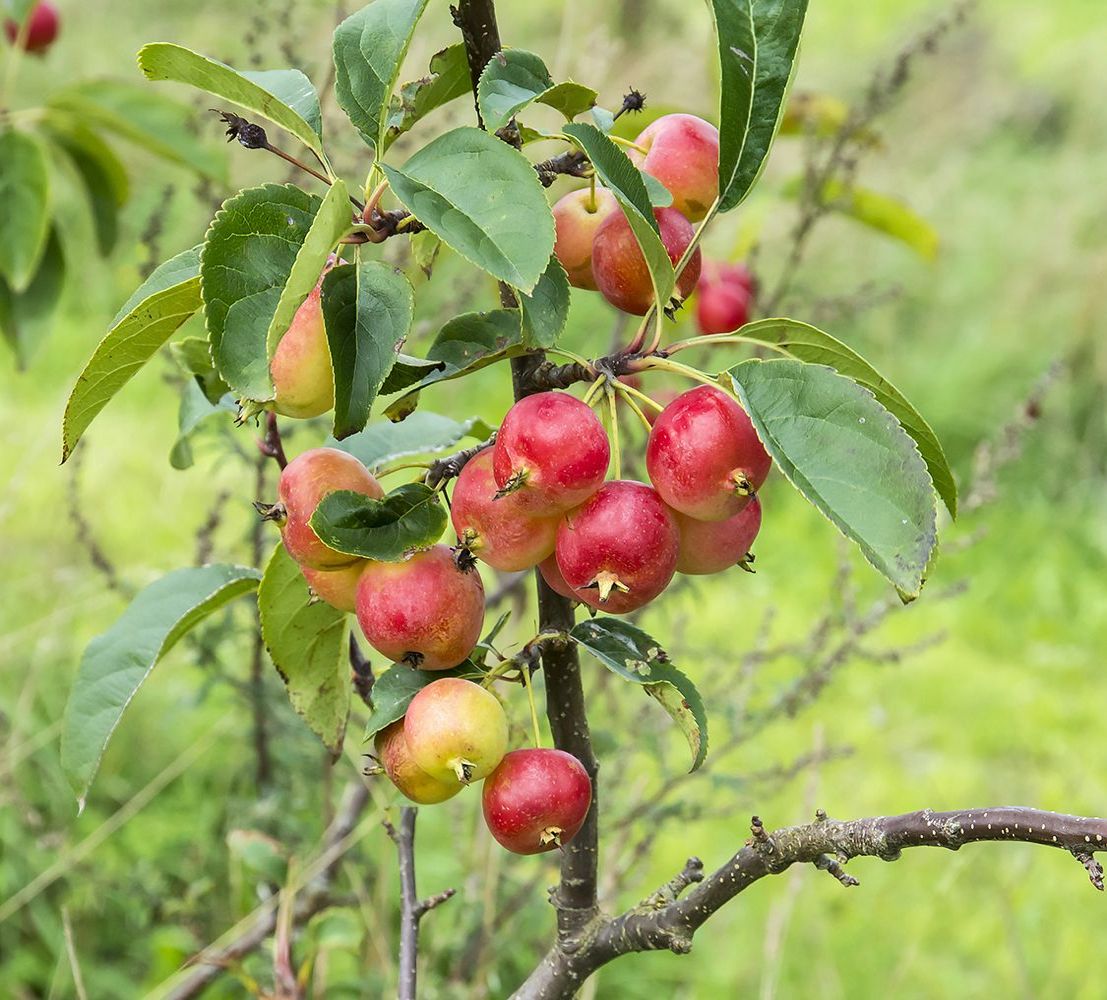Apples and Orchards, wild and domesticated

To understand current human dependency on globalisation it might be useful to consider the provenance or origin of the things we buy: food items, textiles, cars and so on, and to accelerate the development of endeavours with a local or circular economic focus. We could begin with the APPLE.
There is an Apple Day each year in the UK; an event created in the 1990s by a Dorset community group called Common Ground to raise awareness of the importance of orchards to nature and to local communities. This year it is on 21st October.
In autumn 2022 I took part in a Northamptonian Apple Day held by South Court Environmental (SCE) Group at Wilson's Orchard in Northampton, one of five remaining orchards in the county. The event consisted of tastings, juicing in action, eating apple-based recipes, and perusing a range of books on fruit and orchards. Peter Nalder of SCE has dedicated much of his life to the 'Apple Cause': to perpetuate the symbiosis of tradition, heritage and biodiversity.
Wilson's Orchard is mainly a Bramley Apple Orchard, originally one of two. One became a housing estate but then community action in the 1990s prevented Wilson's being sold off in 'lots' to the residents of the housing estate. Wilson's Orchard is now recognised by West Northants Council as an important green space and community orchard in Northampton town. It is bound by the Nene River's flood plain which is managed as a wet land for wild life while the orchard trees, many of which are more than 100 years old, dampen the hum of the A45.

The Bramleys of Wilson's Orchard would have originated from a Bramley pip planted by a young woman called Mary Brailsford in a Nottinghamshire garden some 200 years ago. Since then every single Bramley apple or tree planted has come from that pip. Perhaps the apples should have been named Brailsfords but instead they were named after Matthew Bramley who was the next owner of the garden. Mary died and never knew! However the Bramley apple industry is now worth circa £50 million.
Even more romantic than the idea of a young woman planting her pip is to consider the wild fruit orchards growing millennia before the Bramley, on the foothill slopes of the Tien Shan mountains of Kazakstan, yielding the original species of many of our domesticated fruits and nuts. Archaeobotany and genetic studies have demonstrated the DNA connections between our domesticated apple: Malus domestica and the wild Asian crab apple: Malus sieversii.

Human migrations and large animals such as camels and horses enabled seed and pollen dispersal, humans therefore performing the role of megafauna in creating an apple diaspora. Apple evolution and spontaneous hybridisation to larger forms from the small crab apple was therefore accelerated by human activity along such routes as the Silk Road from Asia into the Middle East and Europe.
Apple hybridisation in the time since the Bramley has become deliberately trait orientated: genetic manipulation for commercial gain. Gala apples hail from New Zealand and combine the DNA of the Orange Red Apple and the Australian Golden Delicious. Every continent has created its own varieties suited to soil and climatic conditions and each variety will provide particular culinary or medicinal or shelf-life and transportable features to provide for varying consumer choice.
Some varieties have their own branding. The Pink Lady apple, now very popular, has its own trademark.
However those six-pacs we find in our supermarkets are likely to come from commercial orchards where production depends on chemical use. They cannot be grown organically, commercially. The further a variety is genetically from the original Malus seversii, the more chemically-dependent they are. The older varieties are better suited to organic regimes, an important factor in establishing local organic community orchards.
Apples are interwoven with human history and mythology. It is interesting to note that the association with evil acts comes from a misunderstanding: that malum in Latin means evil and malum in Greek means apple! Malum and Malus create other apple stories!
The sturdiness, goodness and beauty of the apple fruit must continue. We would do well to work to increase the creation of community orchards in a form that provides for that tapestry of humans as megafauna in balanced bio-diverse agro-forestry systems. Through this we can return to, and celebrate, varieties less removed from the original Malus crab apple.
Wilson's Orchard, Northampton is off Billing Road East NN3 3XE
References:
http://www.heritageappletrees.com/
http://www.englandinparticular.info/orchards/o-nhants-i.html
